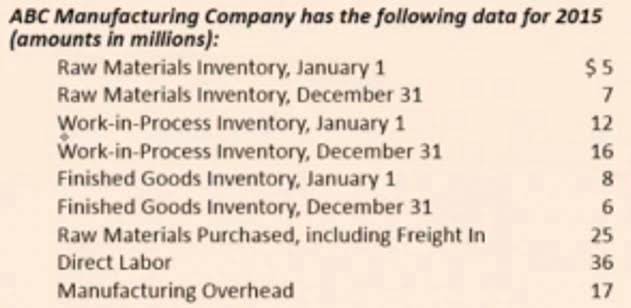- Haben Sie Fragen?
- +49 574270104-0
- info@kahre-team.de
Bookkeeping

And so there will be a little bit more peaks and valleys in terms of activity with them. And if getting into another holistic type of agreement makes what does a retained earnings statement look like sense, we will. And if we don’t think it does, we’ll stay and pay up the drink, and we’re very confident in our ability to monetize that way.

Retained earnings vs. cash flow
This ending retained earnings balance can then be used for preparing the statement of shareholder’s equity and the balance sheet. As you can see, the beginning retained earnings account is zero because Paul just started the company this year. Likewise, there were no prior period adjustments since the company is brand new. The beginning equity balance is always listed on its own line followed by any adjustments that are made to retained earnings for prior period errors.

Submit to get your question answered.
A statement of retained earnings is a financial statement that lists a business’s retained earnings at the end of a reporting period. Retained earnings are business profits that can be used for investing or paying liabilities. The statement of retained earnings can either be an independent financial statement, or it can be added to a small business balance sheet. When it comes to managing your business’s finances, you can never be too organized.
Understanding Statement of Retained Earnings

US and Canada, property revenue growth was approximately 1%, or over 4% excluding straight line and includes an approximately 1% negative impact from Sprint churn. The technique of appealing to a whole market rather than a specific group is known as mass marketing. The goal of mass marketing is to reach the greatest number of potential clients. The method is often used by huge organizations and is the polar opposite of specialty marketing. To achieve a bigger number of sales and maximum brand exposure, mass marketing often focuses on offering „must-have“ items at a cheaper price. One of the most significant advantages of mass marketing is the breadth and low cost of promoting on a much wider scale than smaller business marketing tactics.
- So there’s still a runway of continued opportunity there to get the mid-band deployed there.
- As a result of this donation, Cetam should include an amount of 0 as unrestricted net assets.
- You can do this calculation on a quarterly or annual basis.
- It’s often the most important number, as it describes how a company performs financially.
- Below is a portion of ExxonMobil Corporation’s cash flow statement for fiscal year 2021, reported as of Dec. 31, 2021.
- All of our content is based on objective analysis, and the opinions are our own.
As a result, any items that drive net income higher or push it lower will ultimately affect retained earnings. A company’s shareholder equity is calculated by subtracting total liabilities from its total assets. Shareholder equity represents the amount left over for shareholders if a company pays off all of its liabilities. To see how retained earnings impact shareholders‘ equity, let’s look at an example. Retained earnings are reported under the shareholder equity section of the balance sheet while the statement of retained earnings outlines the changes in RE during the period.
Statement of Changes in Shareholder Equity
- When the supply of excess reserves decreases, banks may have less funds available to lend, which can cause the demand for funds to increase.
- Let me just clarify, the 25% is pro forma for the India transaction.
- Retained are part of your total assets, though—so you’ll include them alongside your other liabilities if you use the equation above.
- You’ll also need to calculate your net income or net loss for the period for which you are preparing your statement of retained earnings.
If you’re calculating retained earnings for the first time, your beginning balance is zero. Net income is found on your company’s profit and loss statement (also called an income statement). You’ll refer to the balance sheet to find cash dividends and stock dividends on your balance sheet. The financial statements are used by investors, market analysts, and creditors to evaluate a company’s financial health and earnings potential.
Factors such as an increase or decrease in net income and incurrence of net loss will pave the way to either business profitability or deficit. The Retained Earnings account can be negative due to large, cumulative net losses. Naturally, the same items that affect net income affect RE.
- Finally, calculate the amount of retained earnings for the period by adding net income and subtracting the amount of dividends paid out.
- Retained earnings are the net earnings after dividends that are available for reinvestment back into the company or to pay down debt.
- Financial statements are also read by comparing the results to competitors or other industry participants.
- The method is often used by huge organizations and is the polar opposite of specialty marketing.
- We are starting to see some green shoots in some of those markets where they need those cheaper gigabytes that 5G delivers, and we’re seeing some deployments there, but there’s a lot of runway ahead to deploy it there.
- At a high level, our scale allows us to operate more profitably by leveraging shared overhead and a global balance sheet that creates cost of capital advantages.
- From a long-term perspective, I would say that we see pre-tax income growing in line with AFFO and AFFO per share growth on average and over time.
- The commercial demand deposit account and banking services are provided to you by Column N.A., member FDIC.
- Business owners love Patriot’s award-winning payroll software.
This balance is generated using a combination of financial statements, which we’ll review later. When the Retained Earnings account has a debit balance, a deficit exists. A company indicates a deficit by listing retained earnings with a negative amount in the stockholders’ equity section of the balance sheet. The firm need not change the title of the general ledger account even though it contains a debit balance.

Retained earnings are an equity balance and as such are included within the equity section of a company’s balance sheet. Preparing a statement of retained earnings can be beneficial for a variety of reasons, including the following. Investing in securities products involves risk and you could lose money. Carefully consider a fund’s investment objectives, risks, charges and expenses, as described in the applicable mutual fund’s prospectus. If there are retained earnings, owners might use all of this capital to reinvest in the business and grow faster. Others might split the gains, or distribute the surplus to investors.
